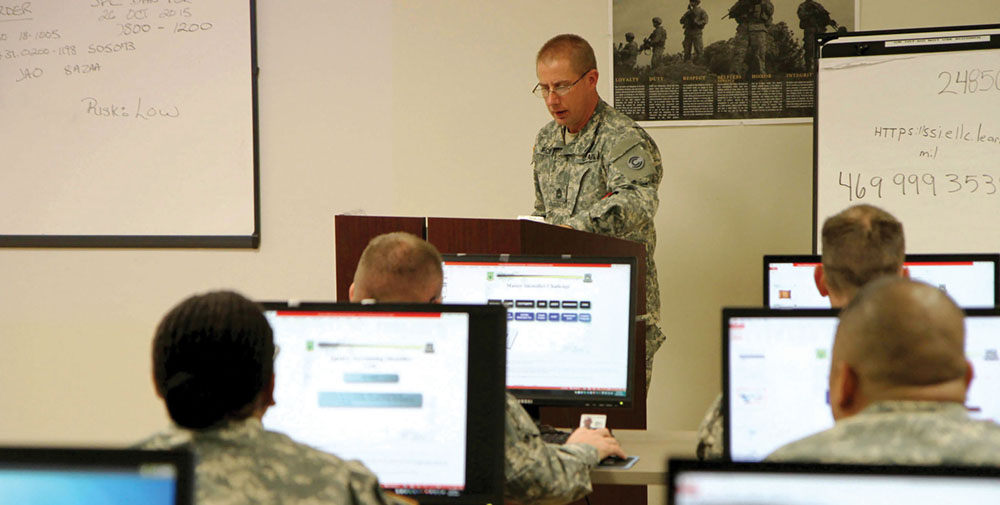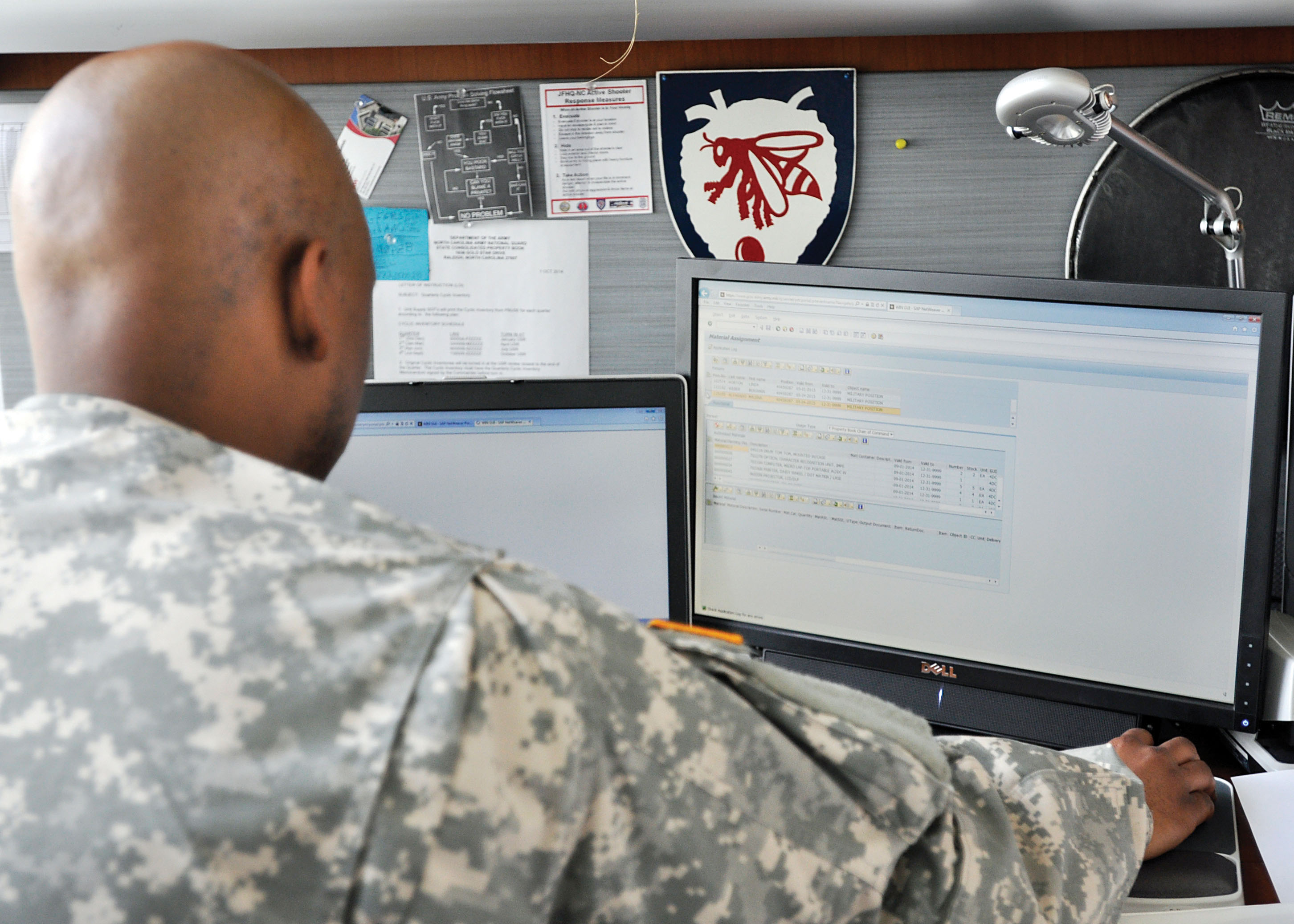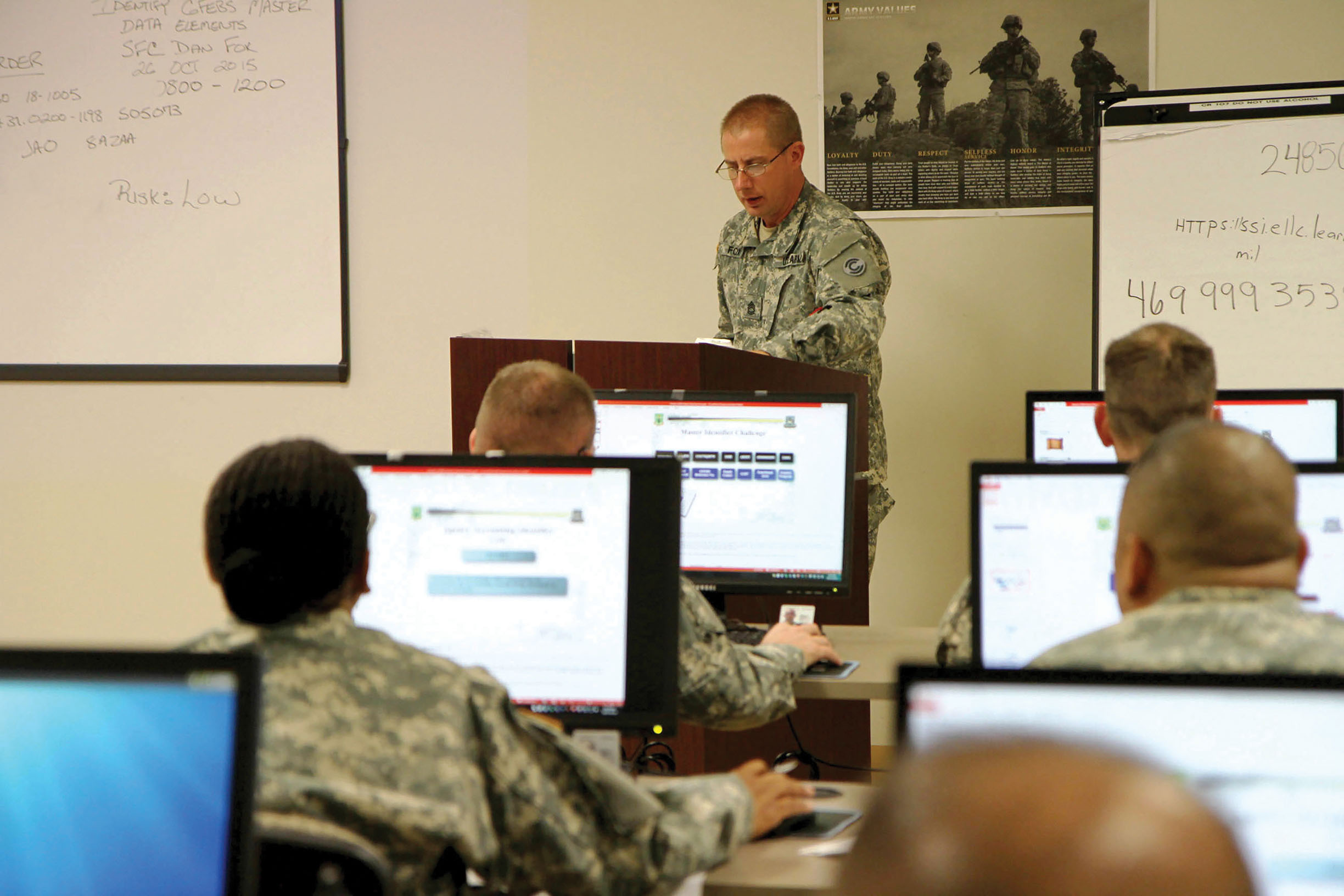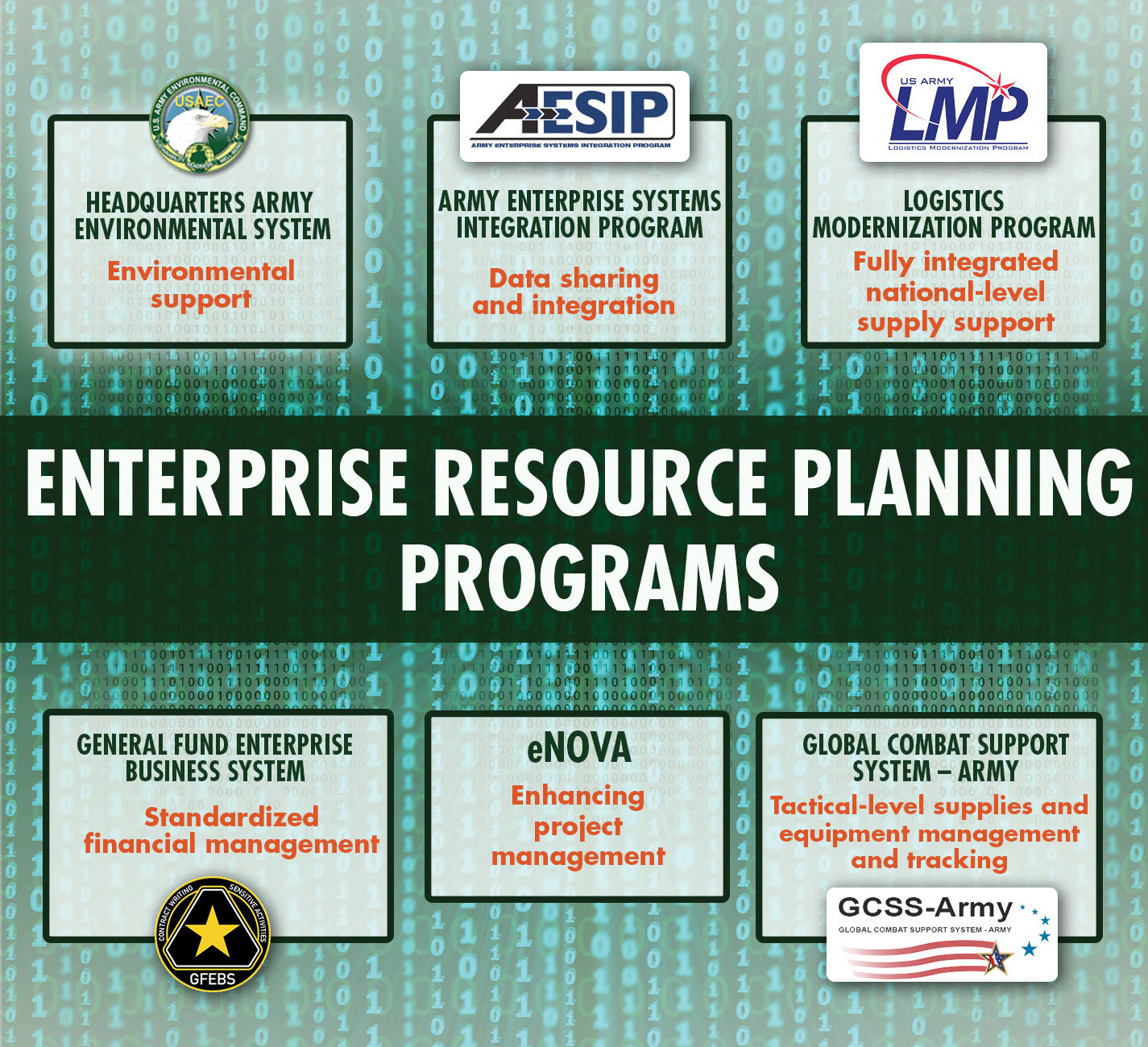
Six Army programs arrived at a single enterprise resource planning solution independently, then turned better buying power into best buying power by working together to bring the licensing costs down for the unexpectedly popular software.
by Col. Harry Culclasure and Mr. Thomas Neff
Category management is a growing trend in today’s marketplace that focuses on the way companies and organizations consolidate contracts, leverage buying power and drive consistent purchasing practices. For a private company with one mission and one pool of money, category management seems straightforward enough; however, for DOD, specialized requirements and initiatives funded with different types of money (for example, procurement, research and development (R&D) and operations and maintenance (O&M) dollars) make category management a major challenge.
By embarking on a unique contracting strategy to buy SAP enterprise resource planning (ERP) software licenses for users to modernize their solutions and execute the business processes using the best planning and management tools, the Army is using an innovative approach to category management, thus turning better buying power into best buying power for six of its ERP programs.
A NEW WAY OF DOING BUSINESS
Under the direction of the Program Executive Office for Enterprise Information Systems (PEO EIS), ERP software, which consists of a set of integrated applications, has transformed the way the Army does business by creating a unique enclave of shared data, detailed reporting, improved asset tracking and financial auditability. This powerful environment is enabled by SAP’s commercial off-the-shelf ERP software platform, which in turn enables the programs to:
- Improve the management and tracking of tactical-level supplies and equipment (Global Combat Support System (GCSS) – Army).
- Standardize financial management (General Fund Enterprise Business System (GFEBS)).
- Fully integrate national-level supply support (Logistics Modernization Program (LMP)).
- Improve data sharing and integration (Army Enterprise Systems Integration Program (AESIP) Hub).
- Support the environment (Headquarters Army Environmental System).
- Enhance project management (eNOVA).
These systems are integral to Army operations worldwide and represent an enormous volume of business conducted by nearly 200,000 users. For example, LMP alone manages $19 billion in inventory, processes 7 million transactions daily and interfaces with more than 80 DOD systems. Three of the six ERP programs are Acquisition Category I major automated information system programs and represent a combined $10 billion investment over nearly two decades.
SELECTING, MANAGING REQUIREMENTS AND VENDORS
Before 1999, the Army procured numerous, independent software applications to separately manage specific missions, such as finance, national-level logistics and tactical-level logistics. With those systems becoming outdated, the Army made a strategic decision in 1999 to begin migrating to a modern, off-the-shelf ERP platform to transform its business operations. Over several years, each of the Army’s logistics and financial ERP programs evaluated different software platform solutions. Based on its ability to provide a variety of capabilities, as well as the company’s extensive experience supporting DOD and its unique requirements, all six programs selected SAP, separately awarding over 20 contracts to purchase more than 50,000 licenses and maintenance packages from SAP and its licensed resellers.

INSTRUMENT HANDLING
Staff Sgt. Christopher McKinnon, the 440th Army Band (AB) supply sergeant, conducts logistical operations using the GCSS-Army program at his unit in Raleigh, North Carolina, in May 2015. The 440th AB is one of the first Army National Guard (ARNG) units trained in the new Army logistics program. (ARNG photo by Sgt. 1st Class Craig Norton, 382nd Public Affairs Detachment)
In 2011, the Army recognized that it would need approximately 80,000 additional licenses over the next four years. With that, AESIP recognized a significant category management opportunity to bulk-buy SAP licenses to save the government millions of dollars and streamline support for ERP users across the programs. AESIP established an SAP integrated product team (IPT) with the Computer Hardware, Enterprise Software and Services (CHESS) program office and the Army Contracting Command – National Capital Region (ACC-NCR). In partnership with the SAP IPT, ACC-NCR awarded the first SAP enterprise license agreement (ELA) by employing industry best practices, including category and requirements management, relationship management and demand management to obtain the best pricing and terms available.
Over the course of the SAP ELA 1, from 2011 to 2015, programs made larger-than-expected purchases to take full advantage of the favorable pricing and terms and, as a result, reached the contract ceiling nearly two years earlier than planned. It was evident that the Army needed a new contract to manage the ERP programs’ software requirements through 2020 to support continued fielding of new and expanded SAP functionality across the enterprise. This follow-on contract became the SAP ELA 2, which addressed emerging ERP requirements, such as enterprise aviation, business intelligence/business warehouse, Army prepositioned stock, ammunition management and shop floor automation, and included annual maintenance renewals, as well as the ability to purchase 181,000 additional licenses.
At the start of the SAP ELA 2 acquisition process, an expanded SAP IPT was established with new representatives from each program and the contracting community, including Army Contracting Command – Rock Island (ACC-RI), Illinois. This new IPT faced three main challenges—ensuring continuity in software maintenance for existing licenses; obtaining the best price for software licenses to meet each ERP’s growth and demand, and to support each program’s fielding schedule within budget; and accelerating the contract procurement to eight months from the average 12 to 18 months it normally takes for this type of acquisition. The SAP IPT had to overcome these challenges to mitigate the potential risks of cost overruns and schedule delays.
LEVERAGING BUYING POWER
Traditionally in government procurement, programs manage their own funding, IT inventory and mission requirements. However, through the use of CHESS ELAs, the Army has achieved significant cost savings of nearly $110 million and business efficiencies across the board. In the instance of the SAP ELA 2, the Army ERPs have been able to leverage buying power to negotiate approximately 51 percent discounts, streamline the acquisition process, centralize software inventory management and promote the sharing of software licenses.
For the SAP ELA 2 to be successful, the SAP IPT and ERP program personnel engaged in daily collaboration, communication and cooperation. The team took a judicious approach to achieve sourcing excellence by taking Better Buying Power 3.0 principles and lessons learned from the previous ELA to further streamline requirements by grouping similar needs and synergizing related efforts, like supply chain planning and financial management, while continuing to share and reuse licenses.
The SAP IPT, with representation from each of the six ERPs, CHESS and ACC-RI, accomplished several major successes that led to “best buying power.” First, the team collaboratively wrote presolicitation requirements that were focused on enterprise mission needs. Then, the team provided documentation to industry partners early and often to further refine the solicitation. The team also came to the negotiation table as a collective entity, gaining major leverage for the government, given the size and scope of the combined requirements.

THAT WAS EASY
Spc. Joe Emanuel Clark, a U.S. Army South (ARSOUTH) supply clerk, receives and verifies office supplies from Henry Ford, a warehouse operator, in January 2015 at the ARSOUTH warehouse on Fort Sam Houston, Texas. The supplies were ordered and processed through the new GCSS-Army structure. The Army is replacing several aging, stovepiped, tactical logistics and financial management systems with a single Web-based ERP solution that provides tactical commanders with near-real-time logistics management information. (U.S. Army photo by Sgt. Mahlet Tesfaye, ARSOUTH Public Affairs)
In all, this effort resulted in no gaps in maintenance support, obtained best value for the government and delivered a timely contract award that coincided with fiscal year end and maintenance renewal cycles to keep the programs on track. Additionally, the collaborative writing process avoided lengthy reviews and editing by multiple organizations.
There was no back and forth among the acquiring organizations, internal compliance review or bidders since the content was clear and concise, allowing responses to be turned around within hours rather than days or weeks. Finally, the streamlined requirements review process placed all six ERP programs together to create a collective set of requirements. Together, they established an enterprise portfolio of common end-to-end software needs that combined contract line items for all six ERP programs versus having multiple contract line items for various ERP programs. Ultimately the consolidated portfolio equates to reduced costs.
“SAP and the ELAs have transformed Army business processes by leveraging commercial technology and best business practices,” said Col. William Russell, GFEBS project manager. “Engaging with industry allowed GFEBS to provide mature capability quicker and with fewer problems to over 35,000 users while also moving the Army one step closer to a fully auditable solution.”
WHAT MAKES THIS CONTRACT UNIQUE
Through ELAs, vendors and government entities are optimizing spending and maximizing the support they receive to get the most of what’s needed, which, in this case, are SAP licenses and maintenance support. However, this contract represents so much more than that—it represents the power of solid relationships.
“The current ELA represents the true value of strategic sourcing, a collaborative partnership among the ERP programs that are fielding SAP-based solutions across the Army, and the software procurement experts with CHESS and ACC-RI,” said Terry Watson, acting PEO EIS. “The Army has built relationships with SAP software suppliers that enable more than just acquiring software at the lowest price. Open and transparent communication with industry partners enables the Army to remain fully informed on industry trends for the next software agreement while eliminating the overhead that results from redundant government contracts.”

HEAD OF THE CLASS
Sgt. 1st Class Marion Fox instructs his fellow classmates as part of his training for Phase 1 of the 94th Training Division’s Finance Senior Leaders Course, held in November 2015 at Fort Dix, New Jersey. Fox was explaining the finer points of master data elements in the Defense Travel System and GFEBS. (U.S. Army photo by Sgt. 1st Class Phillip Eugene)
A good working relationship with industry allowed the Army to leverage its size, scope and customer history to establish the current five-year SAP ELA 2 for $279 million, providing significant cost avoidance in deferred maintenance costs and new procurement price locks, reflecting pricing and maintenance support at rates even lower than the original SAP ELA 1. This contract also provides the Army with significant discounts from the General Services Administration Schedule, an estimated $1.2 billion in cost avoidance, while securing the best end-user license agreement terms and conditions and ensuring additional future savings for the term of the agreement.
Inability to amply license the ERP user community would cripple the Army’s ability to supply, sustain, track and manage materiel and finances to support today’s military landscape. With rising technology costs and falling DOD budgets, finding ways to streamline requirements, obtain best value and reduce costs are essential to the ERP programs’ future.
CONCLUSION
With future estimates of more than 300,000 Army ERP users worldwide, being able to buy SAP software licenses and maintenance support packages in bulk while capitalizing on best price break points have put new meaning to category management for military technology. As part of the SAP IPT, each stakeholder used lessons learned from previous contracts to establish this well-designed consolidated buy and category management package, breaking with the military’s tradition of being unlikely to buy technology as a group.
The Army’s ERP programs support the Better Buying Power mission: “the implementation of best practices to strengthen the Defense Department’s buying power … and provide the U.S. Army an affordable, value-added military capability to the warfighter.” In the end, SAP ELA 2 has made the Army a skilled practitioner of collectively buying technology to support multiple missions, seeing the finest in contract negotiations and turning better buying power into best buying power to support the Army ERP missions worldwide.
For more information on Army software and hardware procurement, go to https://chess.army.mil. For more information on ERP, go to https://www.eis.army.mil.

A SOFTWARE TRANSFORMATION
ERP software represents a dramatic change in the way the Army does business, consolidating systems for data sharing, reporting, asset tracking and financial auditing. (SOURCE: U.S. Army Acquisition Support Center)
COL HARRY CULCLASURE, AESIP project manager, is responsible for a portfolio of programs, including two of the Army’s major ERP initiatives: GCSS-A and LMP. He holds a master’s degree in procurement and contract management from the Command and General Staff College, a Master of Strategic Studies degree from the U.S. Army War College and a B.S. in business management from The Citadel, where he earned his commission into the field artillery. He is Level III certified in program management and contracting, and a member of the Army Acquisition Corps (AAC).
MR. THOMAS NEFF is the CHESS project leader. He entered the Army in 1982 as a private and was later commissioned as a second lieutenant from the U.S. Army’s Officer Candidate School. He is currently a major assigned to the Assistant Secretary of the Army for Acquisition, Logistics and Technology’s Army Reserve Element. He holds an M.Ed. from Loyola University – Chicago, an M.S. in information management from Syracuse University and a B.A. in international relations and government from Lehigh University. He is a graduate of the Senior Acquisition Course at the Dwight D. Eisenhower School for National Security and Resource Strategy at National Defense University (NDU), and holds the Federal Chief Information Officer and Chief Information Security Officer Certificates from NDU. He is Level III certified in program management and information technology, and is an AAC member.
This article was originally published in the April – June 2016 issue of Army AL&T magazine.
Subscribe to Army AL&T News, the premier online news source for the Acquisition, Logistics, and Technology (AL&T) Workforce.







